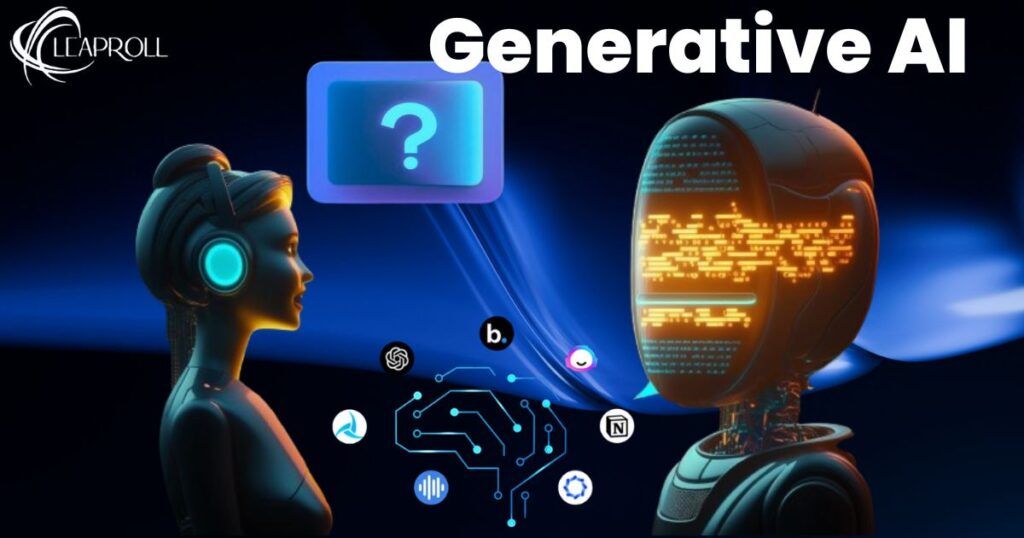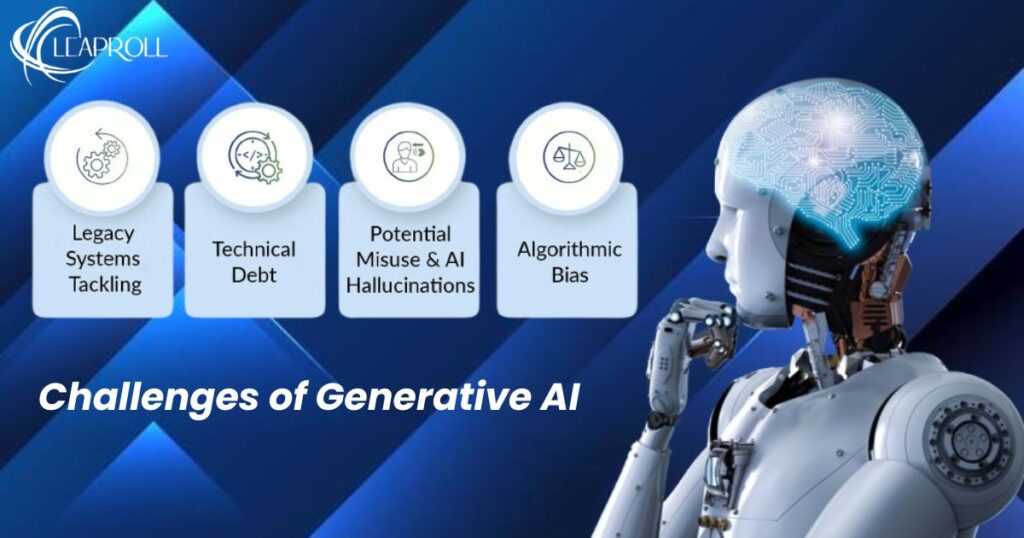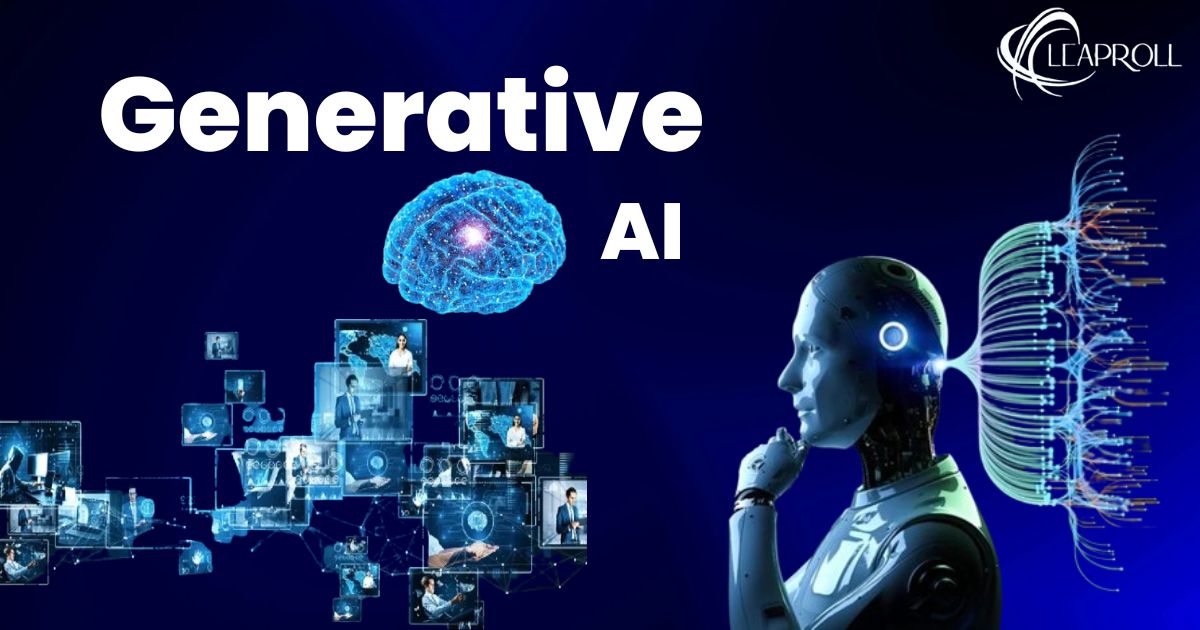imagine writing just two lines, and those words instantly turning into a beautiful image, few inserting a picture into a device and extracting from it an entirely new tune or story. This is the power of Generative AI that can make anything novel as an artist or writer, yet within some seconds. This technology is changing our way of creating, imagining and addressing and solving our problems as students, as a software filmmaker, or anyone who is interested. Now we can take a closer look at the reasons why generative AI is one of the revolutionary tools of time.
What does Generative AI mean?
Generative AI refers to the type of artificial intelligence that can generate new content out of the content provided into them. This can be a piece of text, picture, an audio, a video or even code and the result can also be anything of the same nature. It is the approach of a super-creative assistant who never sleeps and can put his head around everything you might have in mind and implement it right away.
The generative aspect would mean that it does not merely analyze information, but it generates information. It can generate essays, poems, art, 3D models and even synthetic voices that closely mimic real human beings.
Key Characteristics of Generative Ai
Such are the three primary capabilities any useful generative AI model should have:
Quality
Speaking of a particular piece of writing or a picture, it needs to be natural and real. To give an illustration, a poorly made voice clone may sound like a robot, but when it is well made, the voice clone is very close to the voice of a human being.
Diversity
The ideal AI is the system which is capable of generating unique and mismatched content. It must not only repeat the same type of output, but it should pick the patterns that are common as well as rare with the data.
Speed
Time matters a lot, particularly when it comes to real-time applications such as chatbots or design software.
Key Features of Generative AI
Generative AI is not magic all alone but it uses powerful models and architectures. Some of them are important and they include:
Diffusion Models
These models gradually put and delete noise in order to recreate images or create images out of nothing. They can produce high-quality visuals and are applied to such tools as Stable Diffusion.
Variational Autoencoders (VAEs)
VAEs encodes information into something simple and then decodes it. They are quicker than not other than detailed diffusion models.
Generative Adversarial Networks (GAN)
They are based on two models (competitive with one another): a generator and a discriminator. The generative process is followed by the discriminative one. With time, the two become better. Ideal when dealing with realistic imagery, although they may fail to have variety.
Transformers
Such models, GPT-3 and GPT-4, work perfectly in text comprehension and text generation. After information processing, they employ self-attention and positional encoding that makes them suitable to use in translation, summarization, and code generation.
Real World Applications Generative AI

Generative AI is revolutionizing almost all the industries. Here’s how:
1. Writing and language
The ChatGPT tools assist individuals in blogging, summaries, emails, and even codes. They are also able to translate, write or help in legal or medical writing.
2. Creation Image and Design
Such programs as DALL E or Midjourney will allow you to come up with pictures, logos, even create 3D avatars or even interior design schemes by simply giving a description.
3. Audio and Music
Feel like a classical song in the vein of Mozart or a podcast voice over? Voice, background music and sound effects are able to ,created using AI. It also finds use in audio design of video games and virtual assistants.be
4. Animation and Video
It is possible to perform such tasks with the help of generative AI: create short videos, bring characters to life, or improve the quality of the video. It is used in the generation of storyboards or visual effects by the filmmakers.
5. Synthetic Data Generation
AI can also synthesize training data when real data is scarce or evidenced-based, as well as in the areas of healthcare, finance, and autonomous vehicles.
6. Healthcare
Artificial intelligence assists in drug development through development of new protein structures. It also supports medical imaging, and predictive diagnostics.
7. Instruction and Science
AI is used by students and teachers to produce study content, quiz questions and summaries. It is used by researchers who simulate experiments or generate data on which scientific models can be built.
Tips to Getting Start with Generative AI
You are still a gadget lover, here is what you do:
Identify Your Need
Would you like to create text, pictures, music or code? The tool or model will be determined by your use case.
Select a Tool or a Platform
- In the case of text: ChatGPT, Jasper AI
- In case of pictures: Midjourney, DALL·E, Adobe Firefly
- In the case of code: GitHub Copilot
- Audio: ElevenLabs, AIVA
- To video: Runway ML, Synthesia
- Play with Pre-trained Models
Even more, utilize the existing models such as GPT-4 or Stable Diffusion via APIs or websites. No coding is necessary in most of the cases.
Trial & Test
It is possible to train models on a dataset by advanced users on such platforms as Hugging Face or Google Colab.
Use Ethically/Legally
Licensing of data, credit to the provider, and generation of bad or misleading information should always be avoided.
Generative AI Challenges

In spite of its strength, generative AI is associated with challenges:
Expensive and Infrastructure
Large models are trained on GPUs, the cloud, and professional teams, and not every company can afford it.
Slow Sample Rate
The models such as diffusion models have better generated results but are time consuming. This is an issue with real-time applications.
Data Quality
Garbage in, and garbage out. When the training data is low or is biased, then the outcome will be as well.
Legal Concerns And Ethics
The main concerns include misuse of AI to generate fake content or deepfakes, and unlicensed usage of the copyrighted data.
Limited Understanding
Artificial intelligence does not understand human manners. It imitates patterns. There are times that it may hallucinate or make false answers with really high confidence.
Competitors of Generative AI
A number of businesses are spending fairly on generative AI:
- OpenAI: Authors of ChatGPT and DALL·E, the leaders of LLMs.
- Google DeepMind: Famous because of its Gemini and music generation products.
- Anthropic: Founders of Claude, a ChatGPT rival.
- Meta AI: Developing open source models of language and vision.
- Microsoft: Collaborated with OpenAI to bring AI to the office.
- NVIDIA: Provides such platforms as NVIDIA Picasso and Omniverse on 3D and generative work.
- Adobe: Photoshop and Illustrator have such embedded generative tools.
- Runway ML & Stability AI: Occupied with the image, video and creative tools.
Conclusion
Generative AI is not a tech-trend anymore; it is a revolution. It alters our perception on what art, content, science and innovation are. It leads us to places we never knew we could go: it makes us more creative; it could help solve the world problems. Yet like any strong weapon, it has to be handled with caution. Generation AI has the potential to make our future more intelligent and more creative when mixed with the right amount of ethics, creativity, and curiosity.
FAQs
Ans- Yes! Tools like ChatGPT, Canva AI, and DALL·E offer simple interfaces that anyone can use
Ans- Mostly yes, but always verify the results, especially in sensitive areas like law or medicine.
Ans- Traditional AI often classifies or predicts. Generative AI creates new content from input.
Ans- ChatGPT, Jasper AI, and Copy.ai are some of the top choices.
Ans- Not replacing, but enhancing. It helps people work faster, explore ideas, and boost productivity.
Disclaimer:
The information provided is for general understanding of generative AI and its applications. It is not intended as technical advice or a guarantee of results. Always verify tools and data sources before implementation, and use AI responsibly and ethically.
You can also read about :



